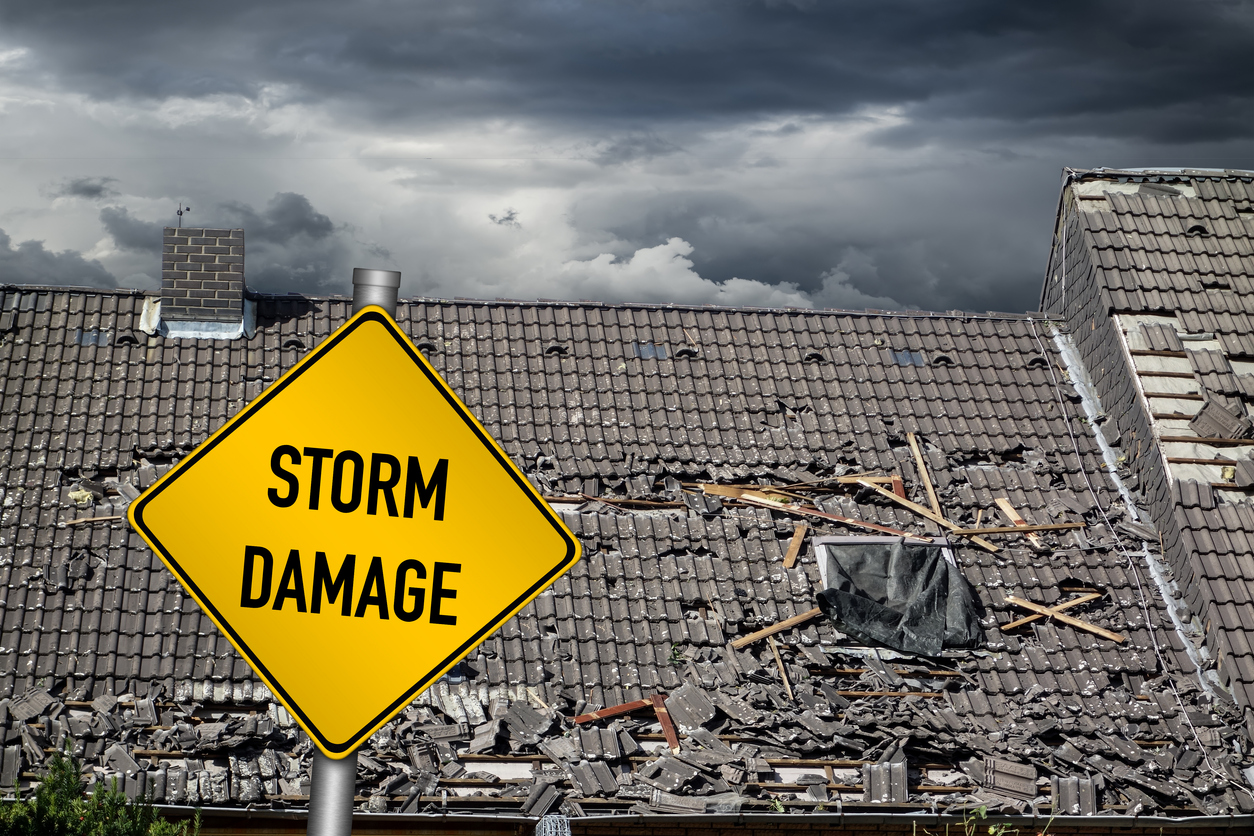
When storms strike, homeowners often worry about the integrity of their roofs. One of the most common questions is, “what wind speed damage roof?” This query is surrounded by myths and misunderstandings, leading to confusion and, in some cases, overlooked damage. Understanding the reality of wind damage and how to handle it can save you time, money, and stress.
At Claims Help 911, we specialize in helping homeowners navigate roof damage claims caused by high winds. This blog will address common myths, present the facts, and offer tips to protect your roof and successfully file insurance claims.
Understanding Wind Damage to Roofs
What Wind Speed Causes Roof Damage?
The extent of wind damage to a roof depends on several factors, including:
- Wind Speed: Generally, winds over 45 mph can cause minor damage, while speeds above 70 mph can result in significant structural issues.
- Roof Age: Older roofs are more susceptible to damage.
- Roofing Material: Shingles, tiles, and metal roofs respond differently to high winds.
- Maintenance: A well-maintained roof can withstand stronger winds than a neglected one.
Learn more about wind damage claims at Claims Help 911.
Common Types of Wind Damage
- Shingle Damage:
- High winds can cause shingles to lift, curl, or blow off entirely.
- Debris Impact:
- Flying debris can puncture roofing materials or dislodge tiles.
- Structural Damage:
- Extremely strong winds can compromise the roof’s underlying structure.
- Gutter and Flashing Issues:
- Wind can tear gutters off or loosen flashing around vents and chimneys.
Myths About Wind Damage to Roofs
Myth 1: Only Hurricanes Cause Roof Damage
Reality: While hurricanes are a common cause of roof damage, even moderate winds (40-50 mph) can harm roofs, particularly if they are old or poorly maintained.
Myth 2: You Can Always See Wind Damage
Reality: Not all damage is visible from the ground. Lifted shingles, small cracks, or hidden structural issues often go unnoticed without a professional inspection.
Myth 3: Metal Roofs Are Immune to Wind Damage
Reality: While metal roofs are durable, they can still suffer from loose panels, punctures, or lifted seams during strong winds.
Myth 4: Wind Damage Is Always Covered by Insurance
Reality: Coverage depends on your policy. Insurers may deny claims for damage attributed to pre-existing conditions or poor maintenance.
Contact Claims Help 911 for assistance with insurance claim challenges.
How to Identify Wind Damage to Your Roof
Visible Signs of Wind Damage
- Missing or Lifted Shingles:
- Look for gaps in your roof’s surface or shingles that appear curled.
- Granule Loss:
- Check gutters and downspouts for granules, which indicate shingle wear.
- Dents or Punctures:
- Look for visible marks from debris impact.
Subtle Indicators
- Water Stains on Ceilings:
- Wind damage can lead to leaks that manifest as discoloration indoors.
- Loose Flashing or Gutters:
- Inspect areas around chimneys, skylights, and gutters for signs of displacement.
- Drafts or Temperature Changes:
- Unexplained drafts may signal compromised insulation caused by roof damage.
Schedule a professional roof inspection with Claims Help 911 to identify hidden wind damage.
What Wind Speed Damage Roof: Breaking It Down
Low to Moderate Winds (20-40 mph)
- Impact: May loosen shingles or dislodge small debris.
- Vulnerabilities: Older roofs and poorly installed shingles.
Strong Winds (40-70 mph)
- Impact: Causes shingle lifting, curling, or complete removal.
- Vulnerabilities: Weak flashing, loose gutters, and improperly sealed seams.
Severe Winds (70+ mph)
- Impact: Significant structural damage, including roof deck displacement.
- Vulnerabilities: All roofing materials are at risk, particularly in older buildings.
Steps to Take After Wind Damage
1. Document the Damage
- Take photos and videos of visible damage.
- Record the date and time of the wind event.
2. Schedule an Inspection
- Hire a professional inspector to assess both visible and hidden damage.
3. File an Insurance Claim
- Notify your insurance company promptly.
- Provide all necessary documentation, including repair estimates and inspection reports.
Learn more about filing wind damage claims with Claims Help 911.
How Insurance Companies Handle Wind Damage Claims
What Adjusters Look For
- Shingle Condition:
- Missing, lifted, or cracked shingles.
- Water Damage:
- Evidence of leaks or moisture intrusion.
- Structural Integrity:
- Displacement of roof decking or framing.
Challenges in Claims Approval
- Policy Exclusions: Damage due to wear and tear may not be covered.
- Insufficient Documentation: Lack of evidence can lead to denials or undervalued claims.
- Disputes Over Cause: Insurers may attribute damage to pre-existing conditions rather than wind.
Contact Claims Help 911 for expert guidance on challenging denied claims.
Tips for Protecting Your Roof from Wind Damage
Regular Maintenance
- Inspect your roof twice a year for signs of wear.
- Clean gutters and downspouts to prevent water buildup.
Upgrade Roofing Materials
- Install wind-resistant shingles rated for high speeds.
- Reinforce flashing and seams with durable materials.
Prepare for Storms
- Trim overhanging branches to prevent debris impact.
- Secure loose items around your property that could damage the roof.
Explore roof maintenance solutions at Claims Help 911.
Real-Life Success Stories
Residential Claim Success
A homeowner in Florida experienced wind damage during a tropical storm. Initially offered a low settlement, they worked with Claims Help 911 to secure a payout covering full roof replacement costs.
Commercial Property Recovery
A business faced extensive roof damage after a windstorm. Claims Help 911’s public adjusters negotiated with the insurer, resulting in a settlement that covered repairs and lost revenue due to operational downtime.
Read more success stories on our website.
Why Choose Claims Help 911?
Expertise in Wind Damage Claims
We provide:
- Comprehensive damage assessments.
- Expert negotiation with insurance companies.
- Advocacy for fair settlements.
Commitment to Client Satisfaction
Our team prioritizes:
- Transparent communication.
- Timely and efficient service.
- Ensuring maximum compensation for your claim.
Visit our website to learn more about our services.
Conclusion
Understanding what wind speed damage roof can help homeowners and businesses prepare for storms and navigate insurance claims effectively. By addressing myths, documenting damage, and seeking professional support, you can protect your property and secure fair compensation.
At Claims Help 911, we’re here to guide you every step of the way. Schedule a consultation today to get started.
Don’t let wind damage claims overwhelm you. Trust Claims Help 911 for expert assistance and peace of mind.
